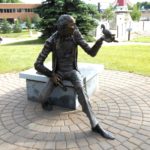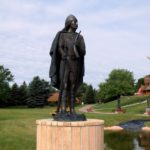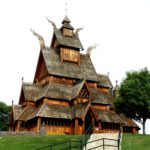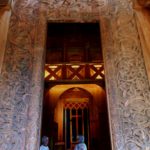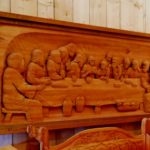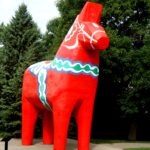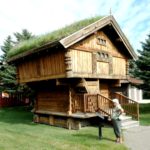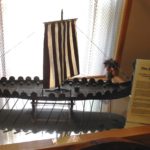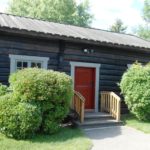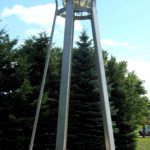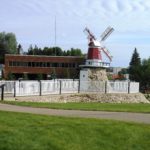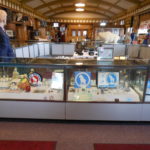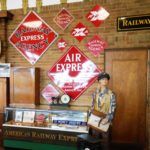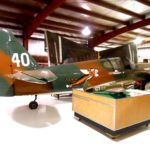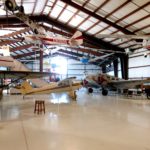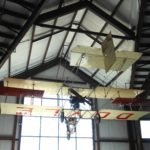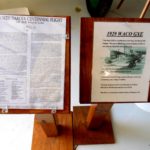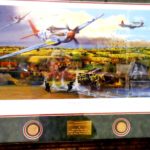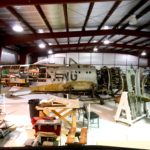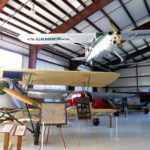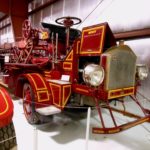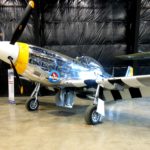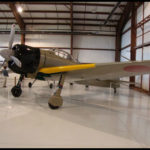Our Rte. 2 journey next led us to Minot. That was good and bad. The northwest quadrant of ND has become the recipient of the Bakken Boom, an oil discovery in 2006 that is still pumping strongly today. It has given the state the lowest unemployment rate in the nation and created a billion dollar surplus in the state treasury. All very good — except to those of us who are not looking for a job or a place to live. The core of this discovery (not to be confused with Lewis and Clark’s Corps of Discovery!) is in Williston. We were interested in visiting Williston while on The Journey because it was an area through which Lewis & Clark passed not long after their first winter in Mandan. Today, Minot — halfway across the state and still 125 miles east of Williston — was inundated with workers and commercial resources. Our campground was the pits, hastily expanded to accommodate the families who’d come to seek their fortune. There was a serious robbery from the rig next to ours and police intrigue on more than one occasion. Our neighbors ran dump trucks that left at the break of dawn for twelve hours of runs through the area.
So we hunkered down and tried to slide into the community that existed before the maelstrom. Several attractions got our nod.
Minot evolved when Jame J. Hill’s Great Northern Railroad stopped there in the winter of 1886 because of the difficulty of spanning the Gassman Coulee with a trestle. The city was incorporated a year later. A typical boom town, it took a great leap forward when the Pentagon built the Minot Air Force Base in the fifties, later to become the Strategic Air Command Bomber and Minuteman Missile Base.
Scandinavian immigration to the area began as early as the 1870’s and continued strongly for many years. Norwegians are the largest segment, followed by Swedes and Danes. It’s no surprise, therefore, that the downtown landscape is visually and spiritually enhanced by the Scandinavian Heritage Park. At the entrance, the Plaza Scandinavia features a 60 foot inlaid map of the five major countries that contribute new American citizens. From it, paths lead to many fantastic exhibits, including the 30 foot high Dala Horse, the 60 foot high replica of the Gol Stave Church, and the Sondre Norheim Eternal Flame Monument. In addition to Norheim, the father of modern skiing, celebrity statues include Leif Eriksson and Hans Christian Andersen. One path led to a museum of history and curious artifacts.
- Hans Christian Andersen
- Lief Ericksson
- Gol Stave Church
- Gol Stave entrance
- Museum
- Dala Horse
- Stabbur (storage building)
- Museum
- Museum
- One Room Schoolhouse
- Sondre Norheim Eternal Flame Monument
- Museum
Not surprisingly, we sought out the local railroad museum. It took a couple of trips around the block to find it, and, when we did, the door was locked. Walking back to our truck, we looked in the back door and found a group of people around a document-laden table. They let us in!
Known as the Old Soo Line Depot Transportation Museum and Western History Research Center, the latter part appears to be the more important. They are only open when staff is working, and they ask for a call-ahead. They let us wander through the handsome building at will, but when I glanced at a stack of non-public documents that were sitting on one of the exhibits, they quickly swept them up! But the displays were informative, and here’s a brief look.
- Railroad Museum
- Railroad Museum
- Railroad Museum
I ventured north to visit the Dakota Territory Air Museum, near Minot Air Force Base. Opened in 1986, it is fulfilling a dream of documenting both the civilian and military legacy of aviation in the region. It displays almost three dozen of the former and about ten of the latter, and it continues to receive new exhibits. An F-15 that flew out of the Base for almost 30 years is on the way this fall; it was part of a defensive squadron known as the Spittin Kittens!
- Curtiss P-40 Warhawk
- Sky View
- Old Timer
- Waco GXE Centennial Flight (100 airports) in 1929
- Tuskegee Airmen
- Paul Tibbets and Enola Gay
- P-47 awaiting restoration
- Gander Mountain’s Plane
- Base Fire Engine
The non-hardware part of the museum is filled with a conglomeration of posters, photographs, models, feature and first-person stories, and reams of documentation on the influence of aviation there and throughout the world – so much that the effort to organize and display all the stuff is a perpetual challenge (and still requiring a lot of work!).
One fabulous attraction remained. A separate hangar reserves space each year for the arrival of the Warbirds of the Texas Flying Legends Museum. Based in Houston, the Flying Legends is a collection of vintage aircraft that travels the nation annually as air show participants. The fleet flies to Minot each May for a two month stay, then moves on to Wiscasset, Maine before returning back to Texas for the winter. About to leave, they were being serviced for the next leg while we were there. In fact, The Last Samurai, a Japanese Zero, was out at the shop, so I borrowed the picture of her below from the Museum’s website.
- Dakota Kid
- Japanese Zero “Last Samauri”
- Betty’s Dream
We were glad to leave Minot and not excited about having to drive through Williston. But Montana — our favorite state — waited on the other side!


